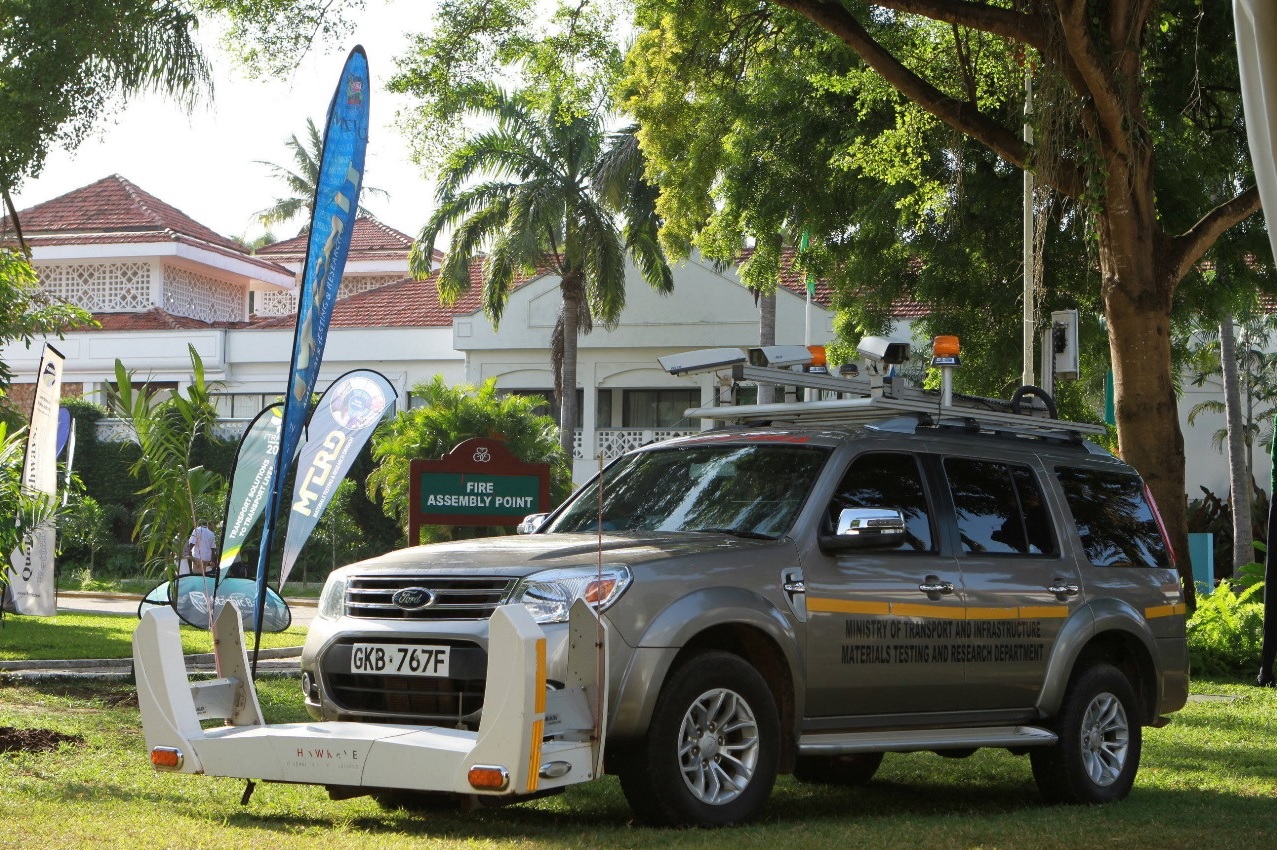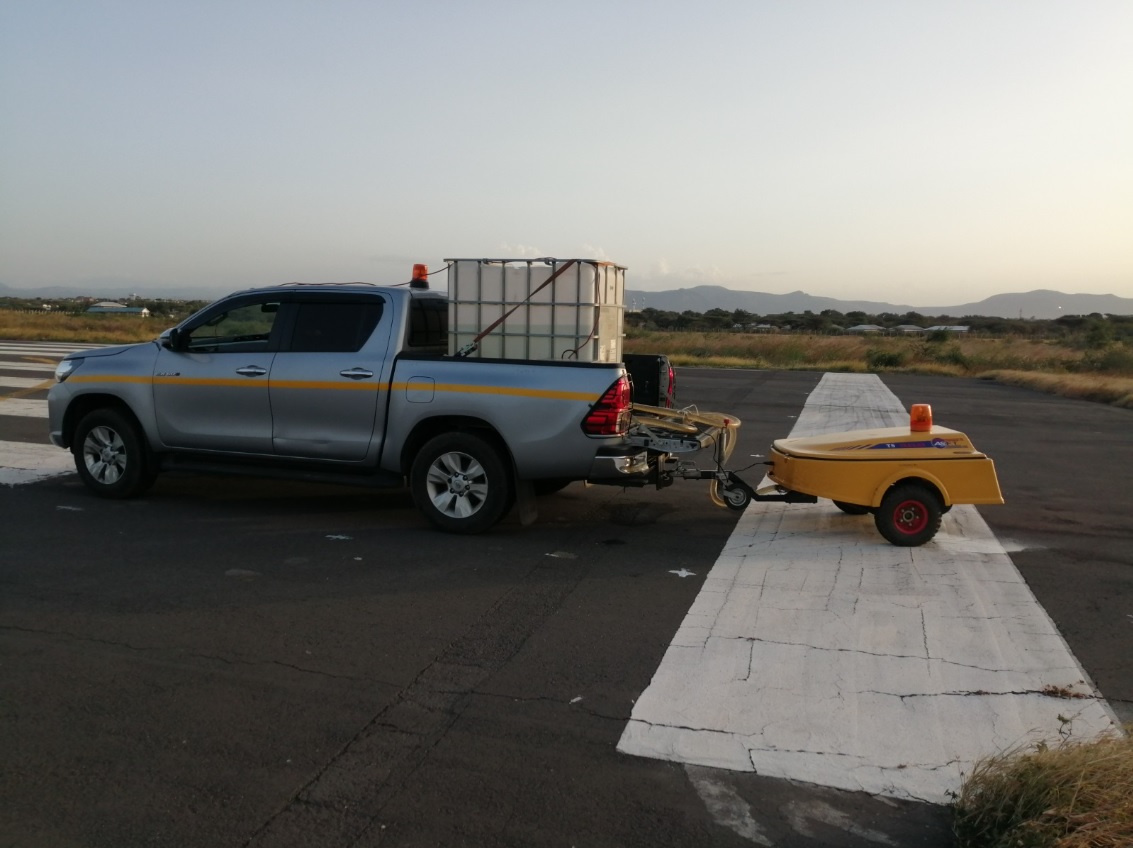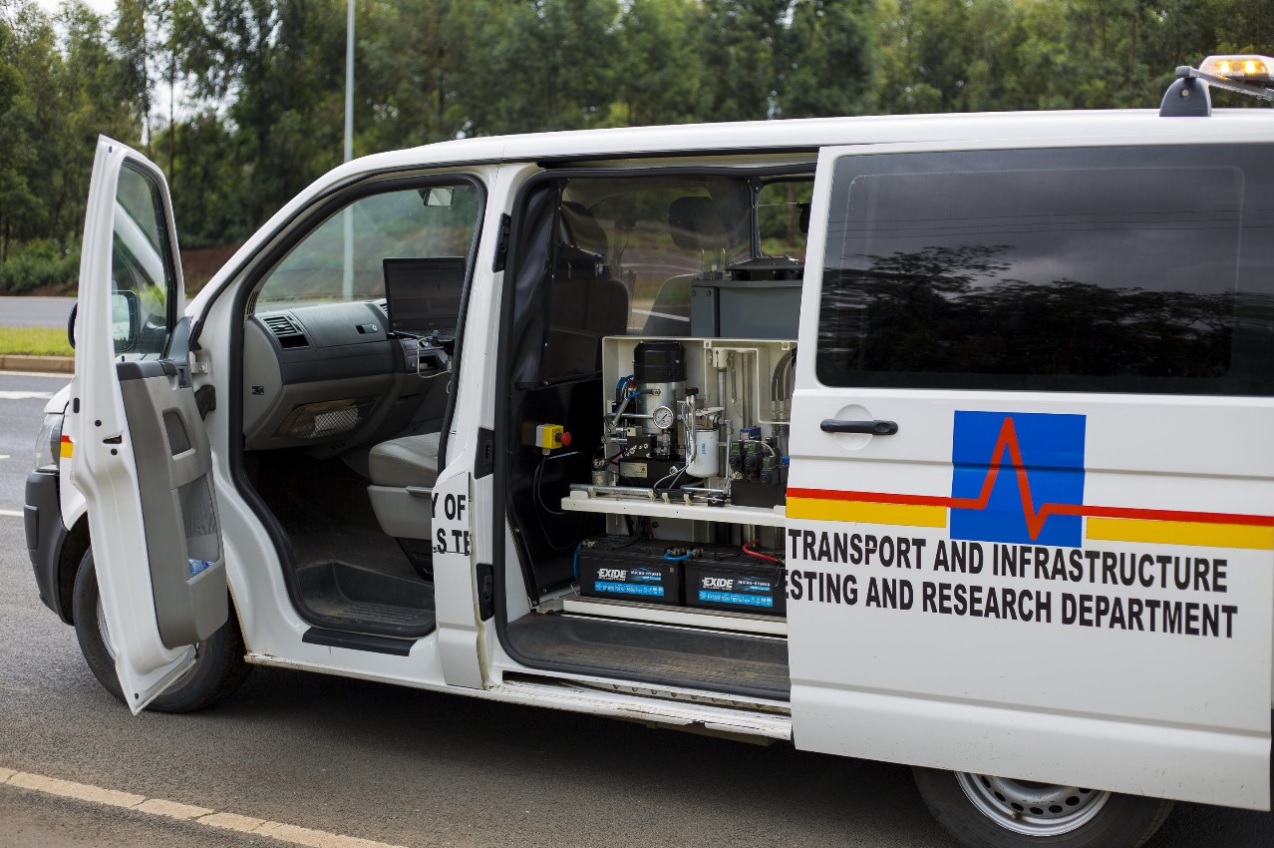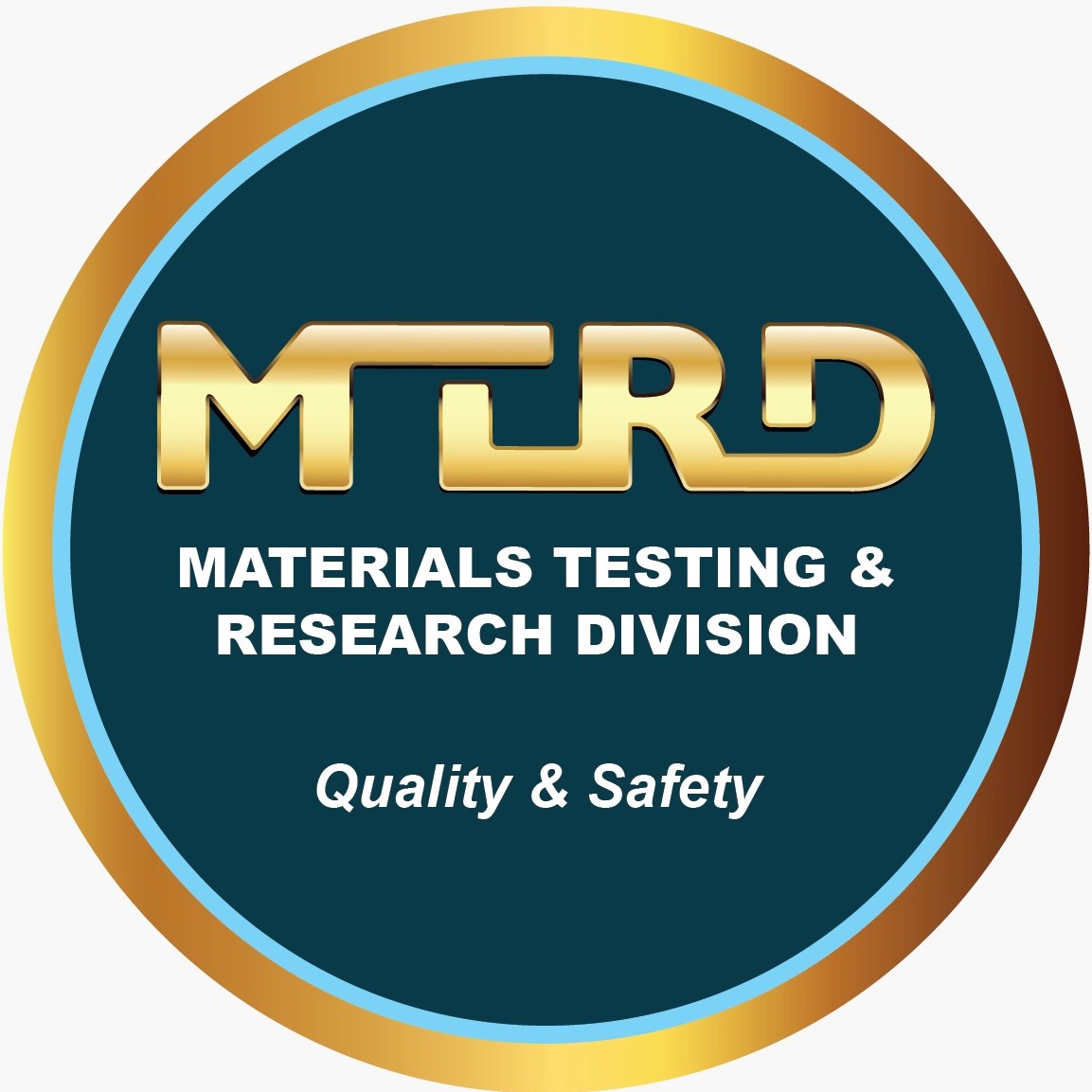PSP

Profiling on road surfaces refers to the process of measuring and analyzing the surface characteristics of a road or highway to assess its condition and identify irregularities or defects. This is typically done using specialized equipment known as road profilers, which can be mounted on vehicles and are equipped with sensors and instruments to capture data about the road's surface texture, smoothness, rutting, and other relevant parameters. Profiling helps transportation authorities and engineers evaluate the quality of road surfaces, detect areas in need of maintenance or repair, and plan road rehabilitation projects effectively. By monitoring and profiling road surfaces regularly, authorities can improve road safety, extend the lifespan of road infrastructure, and enhance the overall driving experience for motorists.
Roughometer
A roughometer, designed for assessing road surfaces, is a specialized device used in transportation engineering to quantify the roughness or smoothness of roads. Typically mounted on a vehicle, it incorporates sensors or transducers that measure the vertical movements or vibrations experienced as the vehicle traverses the road. Roughometers play a pivotal role in infrastructure maintenance and planning, allowing transportation authorities to prioritize road repair projects, allocate resources efficiently, enhance road safety, and improve overall driving comfort by identifying areas in need of attention due to wear and surface irregularities.
Straightedge
The Straightedge tool is used by MTRD to assess the smoothness and evenness of road pavements. The straightedge provides a quick and effective means of identifying surface defects and deviations from desired specifications in road quality and smoothness.
ASFT

MTRD uses the ASFT device used for measuring and assessing the frictional characteristics of airport runways, taxiways, and aprons. It plays a critical role in enhancing aviation safety by evaluating the surface conditions of these areas, particularly during adverse weather conditions. The ASFT typically uses specialized sensors and equipment to determine the coefficient of friction between the aircraft tires and the runway surface, providing valuable data that helps airport authorities and airline operators make informed decisions about aircraft operations, runway maintenance, and whether de-icing or anti-skid measures are necessary to ensure safe takeoffs, landings, and taxiing on airport surfaces.
Coring
Coring on road structures is a process of extracting cylindrical samples or cores from the road pavement for in-depth analysis and assessment of its composition and condition. This procedure involves drilling or cutting into the pavement to collect core samples that extend from the surface to a predetermined depth. These cores are then typically examined in MTRD laboratories to determine the pavement's layer thicknesses, composition of materials, and the presence of defects like cracks, voids, or moisture intrusion. Coring is an essential technique in road infrastructure management, helping engineers and authorities evaluate the structural integrity, durability, and performance of road surfaces. The data gathered through coring aids in making informed decisions about maintenance, rehabilitation, and construction practices, ultimately contributing to safer and more durable road networks.
Trenching
Trenching on road structures involves the excavation of narrow, elongated trenches or ditches in and around roadways for various construction, maintenance, or utility installation purposes. Typically, trenching is done to access and lay underground utilities such as water pipes, sewer lines, electrical cables, or communication conduits beneath the road surface. It is a precise and controlled excavation process that must adhere to safety and engineering standards to prevent damage to the road's structural integrity. Trenches are dug to specific dimensions, often ensuring minimal disruption to road traffic while allowing the installation or repair of infrastructure below the road surface. Proper backfilling, compaction, and surface restoration are crucial steps following trenching to ensure the road's continued functionality and safety.
FWD

MTRD uses the FWD testing device for assessing the structural integrity and load-bearing capacity of road pavements. It consists of a heavy weight that is dropped onto the pavement's surface, creating a dynamic load. Sensors embedded in the pavement measure the resulting deflections or deformations in the road surface, providing valuable data on its structural condition. FWD testing is crucial in evaluating the strength and performance of road structures, identifying areas prone to damage or distress, and determining the need for maintenance or rehabilitation. This information helps transportation authorities and engineers make informed decisions regarding pavement design, maintenance strategies, and road safety improvements, ultimately contributing to the longevity and safety of road infrastructure.
GPR
MTRD uses Ground Penetrating Radar (GPR) for evaluating and inspecting road structures. In road structure assessments, GPR is used to detect and visualize features such as pavement thickness, the presence of voids, moisture intrusion, and the condition of reinforcement layers like steel or rebar. This information helps engineers and transportation authorities assess the structural integrity of road surfaces, identify potential weaknesses or defects, and make informed decisions regarding maintenance, repairs, or rehabilitation efforts, ultimately contributing to the safety and longevity of road infrastructure.
Traffic Volume Survey
A Traffic Volume Survey is a methodical data collection process employed to quantify the flow of vehicles along a specific road, street, or highway over a designated period. This survey typically employs various techniques, such as manual counts by trained personnel, automated traffic counters, or video surveillance systems, to record vehicle movements and classify them by type (e.g., cars, trucks, motorcycles). The collected data provides crucial insights into traffic patterns, peak hours of congestion, and overall roadway utilization, aiding transportation planners, engineers, and policymakers in making informed decisions regarding road maintenance, capacity expansion, traffic management, and urban planning to enhance the efficiency and safety of transportation systems.
Traffic Axle Survey
A Traffic Axle Survey is a systematic data collection method used to gather information about the types and volumes of vehicles on a road or highway. This survey involves the placement of sensors or devices in the pavement to detect and record the number of axles that pass over them. By analyzing the axle data, transportation authorities and engineers can assess the weight and classification of vehicles, monitor traffic patterns, evaluate road conditions, and make informed decisions regarding infrastructure maintenance and planning. Traffic axle surveys are crucial for ensuring road safety, optimizing road design, and managing the overall efficiency of transportation networks.
Alignment Soils
Alignment soils in our context, refers to the natural or engineered soil conditions and properties that influence the alignment and stability of structures or transportation infrastructure. These soils play a crucial role in determining the suitability and performance of the roads. MTRD assess alignment soils to analyze factors like soil type, compaction, bearing capacity, settlement potential, and drainage characteristics. Properly understanding and managing alignment soils is essential to ensure that structures remain stable, durable, and aligned correctly over time, mitigating the risk of subsidence, settlement, or structural failure due to inadequate soil conditions.
Natural Material Sources
These are the locations where construction materials like aggregates, sand, gravel, and stone are extracted directly from the Earth's natural deposits. These sources are typically quarries, pits, or gravel banks that contain geological formations suitable for road construction. The selection and utilization of these materials are critical in road engineering as they influence road quality, durability, and cost-effectiveness. Engineers assess factors such as material gradation, compaction characteristics, and geological stability to ensure that the sourced materials meet the required specifications for road construction. Proper management of these natural material sources is essential to minimize environmental impact and maintain a sustainable supply chain for the construction and maintenance of roads.
Hardstone Material Sources
Hardstone material sources are natural deposits of durable and robust rock materials commonly used in road construction. These sources typically consist of quarries or rock outcrops where varieties of hardstone, such as granite, basalt, or limestone, are extracted. Hardstone materials are valued for their high strength, resistance to wear and weathering, and ability to provide a solid foundation for road surfaces. MTRD carefully assess these sources to ensure that the extracted hardstone meets specified quality standards, including factors like particle size distribution, hardness, and durability. These materials are crucial in building road surfaces, base layers, and sub-base layers, contributing to road longevity and withstanding heavy traffic loads. Proper management and sustainable extraction practices at hardstone material sources are essential to preserve the environment and maintain a reliable supply of road construction materials.

